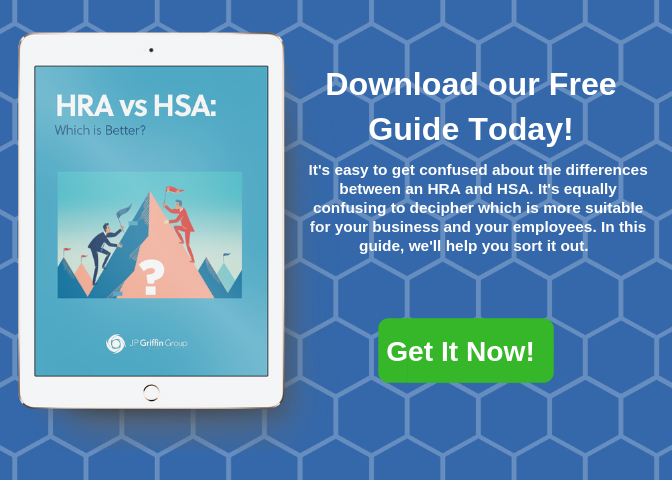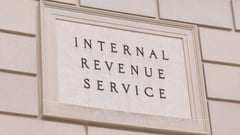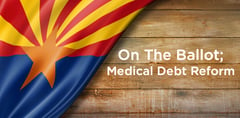 Employers looking to decrease their healthcare costs often rely on workforce adoption of High Deductible Health Plans (HDHPs), which offer both employers and employees lower premiums. Unfortunately, this strategy doesn’t always work out if enrollment in HDHPs (assuming employees are given a choice) fall short of forecasts.
Employers looking to decrease their healthcare costs often rely on workforce adoption of High Deductible Health Plans (HDHPs), which offer both employers and employees lower premiums. Unfortunately, this strategy doesn’t always work out if enrollment in HDHPs (assuming employees are given a choice) fall short of forecasts.
Rightly or wrongly, HDHPs have been saddled with some baggage. Many people have difficulty making the cognitive leap from traditional healthcare plans to HDHPs for a variety of reasons; in part because change is generally difficult for people, but sometimes, it’s simply a fear of the unknown and a matter of not understanding how they work.
While we certainly aren’t advocating that HDHPs are suitable for everyone, they’re a great fit for some — especially those who are otherwise overpaying for health insurance, meaning that they’re paying high premiums, but rarely using their plans.
Here are some common pitfalls to avoid when designing and marketing a high deductible health plan and suggestions on how to avoid them.
Fear of The Unknown / Lack of Education
For people who have always participated in traditional health plans, HDHPs are difficult to wrap their minds around. Where are the copays? You mean I have to pay for doctor’s visits and prescriptions out-of-pocket until I hit the deductible? This is typically followed by shock as the true cost of medical care and prescription drugs (rather than just copayments) sinks in for the first time.
These are big mental hurdles for people to overcome. It seems more expensive, but oftentimes it’s not. Once people understand how the plans work, they realize they have the potential to save money, but it doesn’t necessarily seem like that when they are paying out of wallet vs. per paycheck deductions.
In this case (as in many cases), education is your friend. Offer extra information about how high deductible health plans work and the advantages they can provide. Illustrate possible savings opportunities with custom side-by-side medical plan comparison tables and several different medical usage scenarios. (Just make sure to remain objective by also illustrating scenarios where an HDHP might not be the best option.)
The key takeaway here is that adoption of (and re-enrollment in) your high deductible health plan is largely dependent upon clear, explicit, and consistent communication. Be sure to start your communication on this topic early on (long before open enrollment) and continue doing so throughout the plan year, as often as required. For example, if you see that HSA contributions are lagging, send out a reminder that HSA contributions, unlike an FSA, can be adjusted at any time. Just remember that repetition and frequency of communication is critical. And make sure to utilize a wide variety of communication platforms: print, online interactive calculators, videos, one-on-one presentations, social media, and any other medium your company frequently uses.
Overestimating Risk / Failing To Consider Net Cost
People tend to get stuck on the potential for exorbitant out-of-pocket expenses with HDHPs — which is a legitimate concern. However, the vast majority of the covered population never hits their deductible, let alone total out-of-pocket expenses in a given plan year.
Obviously, there are people who do — oftentimes, people with serious chronic conditions or those who experience major medical events (like a heart attack, stroke, or birth of a premature baby). Healthcare expenses add up quickly, especially emergent ones, which tend to be the most expensive. But overall, healthy people with little need to see a doctor beyond preventative care won’t come close to hitting their deductible throughout the course of the year.
Regardless, don't let employees make the mistake of only focusing on the deductible and out-of-pocket expenses. They should also take into account monthly savings in medical premium, as well as any employee contributions into a Health Savings Plan. Both of these are intended to offset the risk which comes along with a higher deductible.
Help your employees draw these connections and encourage them to look at a more complete picture of true out-of-pocket costs once everything is factored in. While it's admittedly very difficult to predict unanticipated medical expenses for the upcoming year, most especially unforeseen emergencies, most medical expenses are fairly routine and predictable - office visits, screenings, minor procedures, etc.. The key takeaway is that everyone should sit down and pencil out the math to figure out which plan is right for themselves and their families. There are no shortcuts when it comes to making an educated and well-informed decision.

The Deductible on Your HDHP is Too High
It’s common for companies trying to decrease their healthcare costs to raise their deductibles. This practice was happening even before high deductible health plans exploded in popularity with employers. Deductibles used to be as low as $250 or $500, but now, the same health plans are being offered with considerably higher deductibles.
When we hear the term “high deductible health plan,” we assume the deductible will be “higher” than with a traditional plan, but that’s not always the case. Qualified HDHPs, meaning those medical plans which are, by law, allowed to be paired with a Health Savings Account (HSA), must have, for 2018, a deductible of at least $1,350 for individuals and $2,700 for families. (They must also cap total out-of-pocket expenses at $6,650 for individuals and $13,500 for families.)
These minimum deductibles are very reasonable, and even more so when premium savings is taken into account, not to mention optional employer contributions into the HSA. That said, the vast majority of employers set their deductibles considerably higher, with many set at levels which scare off HDHP prospects. Some employers will then fund a portion of an HSA to offset this deductible, but if your workforce is uneducated when it comes to HDHPs, the nuance of looking at true net out-of-pocket cost is lost on them.
Finding the right place to set your deductibles is admittedly difficult - it's part art and part science. It behooves every employer to model out multiple plan design scenarios with their broker to simultaneously optimize benefit cost savings while maximizing plan adoption. The same holds true when it comes to stimulating HSA participation among HDHP plan participants - improving HSA participation will inevitably increase employee satisfaction (and likelihood to reenroll) in your HDHP.

Lack of Employer Contribution Into an HSA
Offsetting the cost of higher deductibles via HSA savings is often a critical component to ensuring participant satisfaction with their HDHP. These tax-advantaged accounts allow both employers and employees to set money aside to pay for qualified medical expenses. But unlike an FSA or HRA, HSA funds don’t expire (they simply rollover from year-to-year), they’re portable upon leaving a company, and they can eventually be used as retirement savings.
For astute employees who are particularly interested in all of the advantages of HSAs (including the triple tax retirement benefits), the mere ability to set one up by enrolling in an HDHP might be enough to lift HDHP adoption.
For most others though, it’s a good idea for an employer to contribute to their employees’ HSA to get the ball rolling. This "free money" will encourage employees to set-up their HSA account and familiarize themselves with the process (though some employers will do this on their behalf). Once an HSA account is opened, the likelihood that an employee will start making contributions of their own rises dramatically.
Employer HSA contributions can be done as a lump sum payment at the beginning of the year, or throughout the course of the year. Most employers prorate these contributions for new hires.
Some employers even make HSA contributions contingent on participatory or outcomes-based wellness initiatives. For example, one of our clients provides a $500 HSA contribution incentive for participating in a biometric screening, while another offers a $1,000 HSA contribution to non-smokers. Another one of our clients offers a dollar-for-dollar HSA contribution match, up to $500.
Encouraging Employees to Explore HDHPs
High deductible health plans can be a great way for employers and employees to save money on healthcare expenses. But it's important to remember that not everyone will jump on board with consumer-driven healthcare. HDHPs aren’t a good fit for everyone and if your company can afford it, it's a good idea to offer an HDHP along with other medical plan choices.
Helping your workforce understand how HDHPs (coupled with an HSA or even an HRA) can benefit them is the best way to encourage them to enroll. Even if you don’t get quite the enrollment adoption you'd hoped for, a few enrollees is better than none.
Are you having trouble getting your employees to enroll in HDHPs? Leave us a comment below or contact us. We’d love to help!



